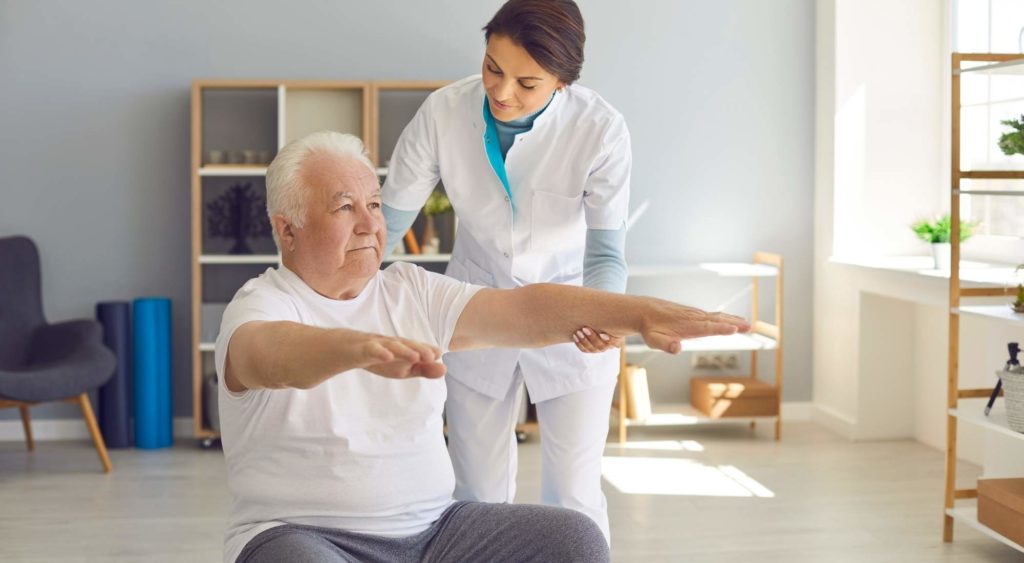
Have you been searching for a way to manage your Ehlers-Danlos symptoms without medications and surgeries?
Do you want to learn more about physical therapy for Ehlers-Danlos syndrome?
Finding a treatment plan that works can be difficult and can leave you feeling like you will never find what you need.
Whether you are new to the idea of physical therapy for Ehlers-Danlos patients or you have been in therapy for years, this guide can help you learn more about how physical therapy can help as well as what to look for — and what to avoid.
Keep reading to learn why physical therapy helps and what you can expect from your therapist.
Table of Contents
- Why Is Physical Therapy for Ehlers-Danlos Patients Beneficial?
- Common Injuries for Patients With Ehlers-Danlos Syndrome That Can Be Treated With Physical Therapy
- Can Physical Therapy Help Ehlers-Danlos?
- 3 Components of Ehlers-Danlos Syndrome Physical Therapy Treatment
- Contact In Motion O.C. For Help With Your Ehlers-Danlos Syndrome Symptoms and Injuries
Why Is Physical Therapy for Ehlers-Danlos Patients Beneficial?
Ehlers-Danlos can cause significant instability in your joints and that can lead to injuries.
If you are looking to combat that instability and avoid injury, physical therapy can be an immense help.
By strengthening muscles around those joints, you can decrease Ehlers-Danlos symptoms.
Physical therapy is often misunderstood and there are many myths surrounding it. Despite the misinformation, you should know that physical therapy can be incredibly helpful for Ehlers-Danlos syndrome.
Common Injuries for Patients With Ehlers-Danlos Syndrome That Can Be Treated With Physical Therapy
Physical therapy is a great way to help alleviate pain and offer your body some respite from Ehlers-Danlos symptoms.
Physical therapy can help with:
- Frequent falling
- Joint dislocation
- Joint pain
- Tears
If you have Ehlers-Danlos, there is hope for relief through physical therapy.
Can Physical Therapy Help Ehlers-Danlos?
Yes, physical therapy can help Ehlers-Danlos.
By helping strengthen different muscles and teaching new ways to move, physical therapy allows Ehlers-Danlos patients to find new paths to symptom relief.
Julie has been battling Ehlers-Danlos for as long as she can remember. Some days, the pain makes it nearly impossible for her to get out of bed.
Hoping to find something that will help, Julie seeks out her local physical therapist.
After assessing Julie’s condition and listening to her concerns, her therapist works with her to create a care plan tailored to her needs. He teaches her some exercises to help strengthen muscles around her main problem joints.
Julie also learns some techniques that help her begin working out — without exacerbating her pain.
As she continues her treatment plan, Julie’s therapist adds in some additional therapies like heat/ice and TENS.
Julie still sees her therapist from time to time and, together, they work to reduce her symptoms and restore vitality and enjoyment to her life.
Thanks to physical therapy, Julie is able to get out and enjoy life, knowing that she has a team behind her to support her.

3 Components of Ehlers-Danlos Syndrome Physical Therapy Treatment
There are several basic components to physical therapy for Ehlers-Danlos patients.
Ehlers-Danlos syndrome and physical therapy mix well and many patients find that seeking physical therapy helps them to find a more pain-free, fulfilling life.
Physical therapy is an important part of healing and preventing injuries. It can be an incredibly helpful way to manage pain and improve your body’s functionality.
#1: Recognizing That Hypermobility Exists in the Patient
The first step in an Ehlers-Danlos syndrome physical therapy treatment plan is to recognize that hypermobility is something that the patient is struggling with.
It might sound somewhat basic and foundational but it is important to recognize the cause of an injury because that can affect the treatment.
If a patient has hypermobility, most therapist’s regular routines of stretches and flexibility training will be of no benefit.
#2: Recognizing How Hypermobility Caused the Orthopedic Injury
Once it is determined that hypermobility is affecting the patient, it is important to recognize exactly how that hypermobility caused the injury.
An injury could have been caused by:
- A fall due to instability
- Joint dislocation
- Over-extension
- A variety of other Ehlers-Danlos related complications
Different causes require different approaches and treatments.

#3: Putting Together a Plan of Care for Someone With Ehlers-Danlos Syndrome
Once hypermobility has been diagnosed and recognized as the cause of the injury, it is time to build a plan that helps with recovery and assists in preventing future injuries.
Your physical therapist has extensive training and experience working with a variety of injuries and causes and can work with you to create a plan that is:
- Manageable
- Helpful
- Personalized
What Are Some Ehlers-Danlos Syndrome Physical Therapy Precautions?
When seeking physical therapy for Ehlers-Danlos, patients need to know that they require a different type of care plan than other patients.
Many general physical therapy plans include movements designed to improve flexibility, but flexibility typically isn’t a problem for EDS patients.
Remember Julie and her physical therapist? Imagine that her therapist didn’t listen to her concerns and instead proceeded with his usual regime.
Julie could have easily ended up with further injuries and pain.
She would be no better off than when she started.
Julie would have lost time, money, and hope.
Here at In Motion O.C., we believe that our patients know their bodies and we want to help them find healing and progress.
We have patients that we care about, not numbers that we check off of a list.
Caring means listening and working with our patients to find solutions that truly help them improve their lives.
What Physical Therapy Exercises are Most Effective for Patients With Ehlers-Danlos Syndrome?
One of the key components of an effective Ehlers-Danlos syndrome physical therapy treatment plan is strength training.
But before you start curling and bench pressing, you should know that this is a different kind of strength training.
Your therapist will determine specific areas to target and teach you movements that help accomplish that.
Your therapist might encourage some aerobic movements and teach you some resistance exercises. These can help improve stability through increasing muscle strength.
Education for Ehlers-Danlos Patients
Another valuable tool that your physical therapist can offer is education on EDS that allows you to prevent and avoid further injuries.
Your therapist can teach you what to watch for when engaging in physical activity.
They can help you learn more about how to avoid overstretching.
Here at In Motion O.C., we know that helping our patients means more than just one session per week.
We make it our focus to ensure that you have the information you need to confidently live your best possible life.

Contact In Motion O.C. For Help With Your Ehlers-Danlos Syndrome Symptoms and Injuries
We get it.
Ehlers-Danlos syndrome sucks. It can cause pain, injuries, and leave patients feeling alone and hopeless.
At In Motion O.C., we know that there are ways to manage EDS symptoms and restore a high quality of life.
We take the time to listen to our patients and understand their pain and concerns.
We are here to listen to your symptoms and hear about your injuries.
We can help.
We have the knowledge and resources to help you begin your journey on the road of coping and healing.



